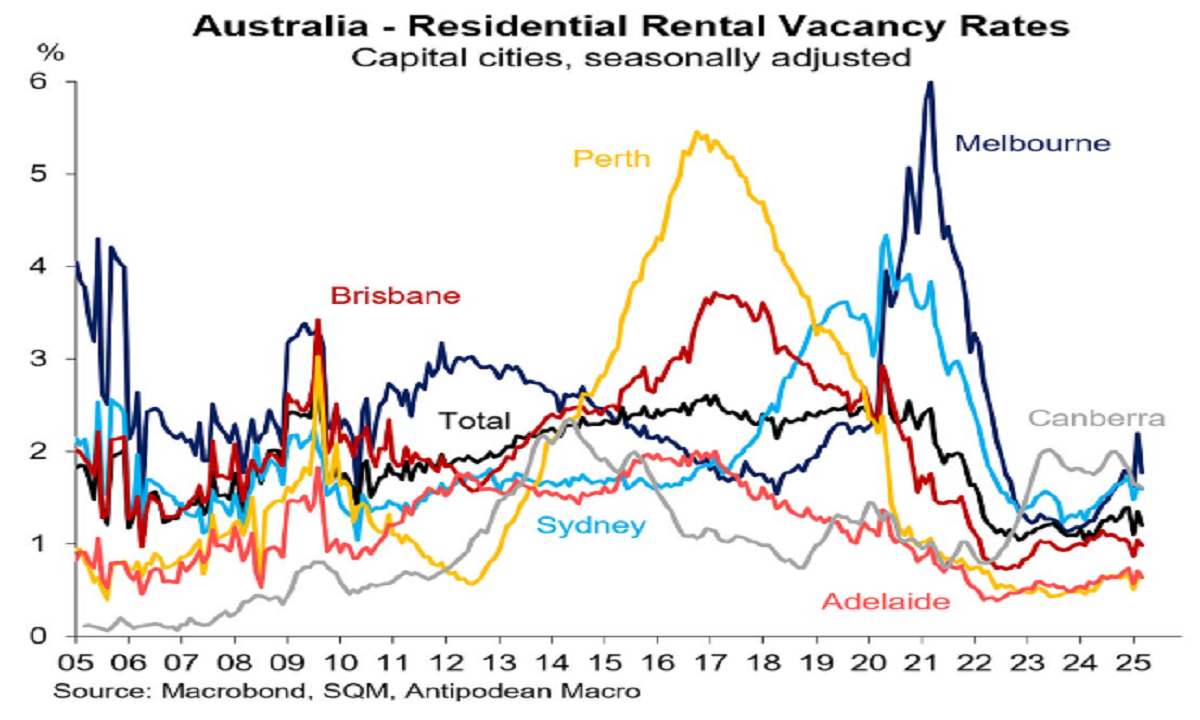CoreLogic’s snapshot of housing affordability across Australia showed that the percentage of gross annual household income required to service the median rent hit a record high of 32.9% at the end of December 2024:
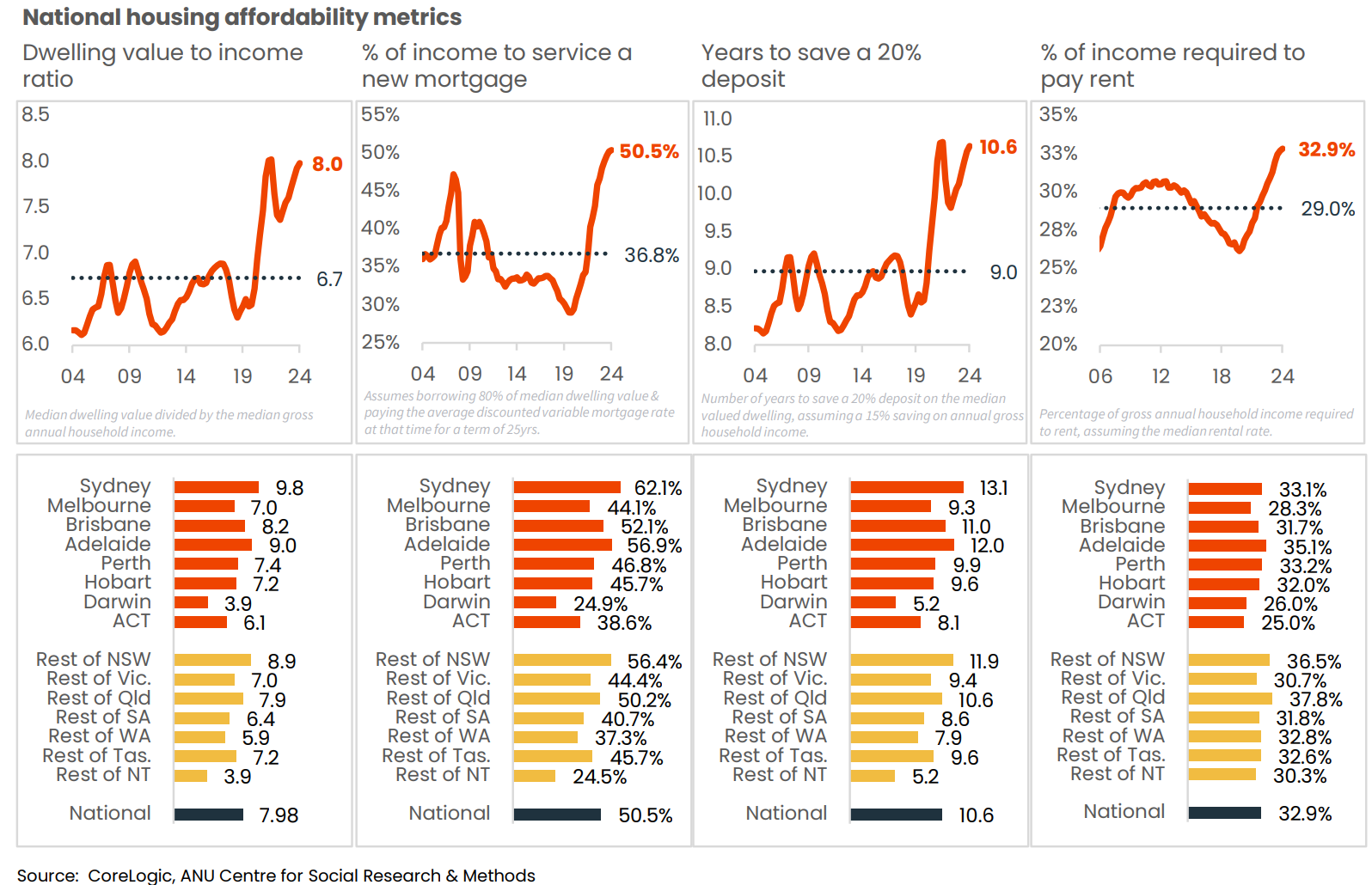
In a similar vein, PropTrack’s latest rental affordability report showed that Australian households at the end of 2024 could afford to rent the smallest share of advertised rentals since at least 2008, when records began.
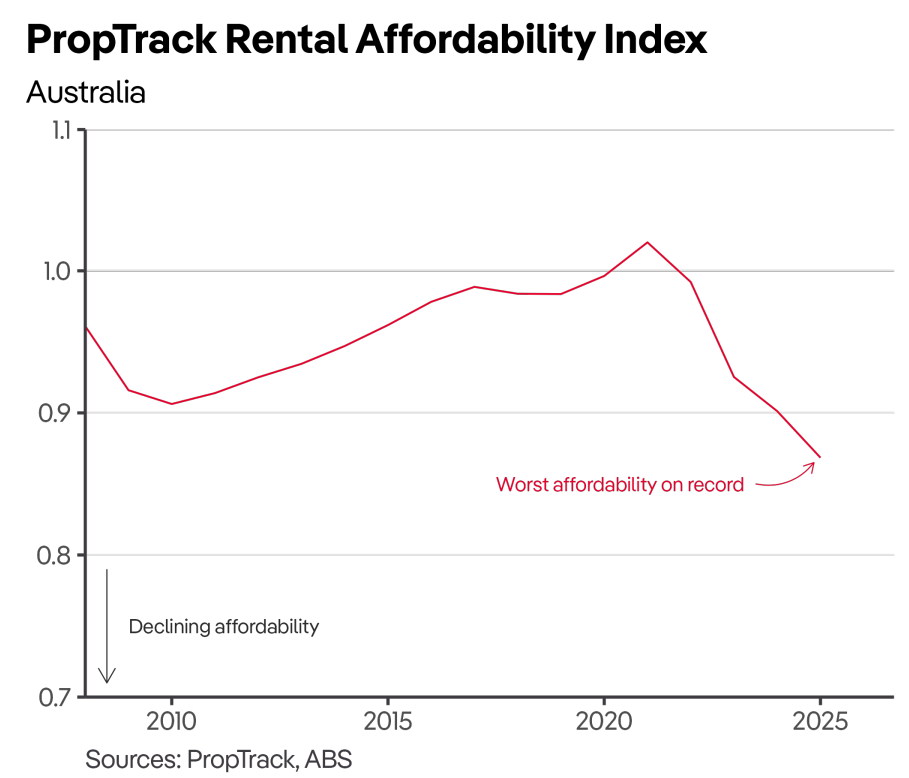
The main driver behind the declining affordability was the hyperinflation of rents, which had risen by 48% nationally since the start of the pandemic.
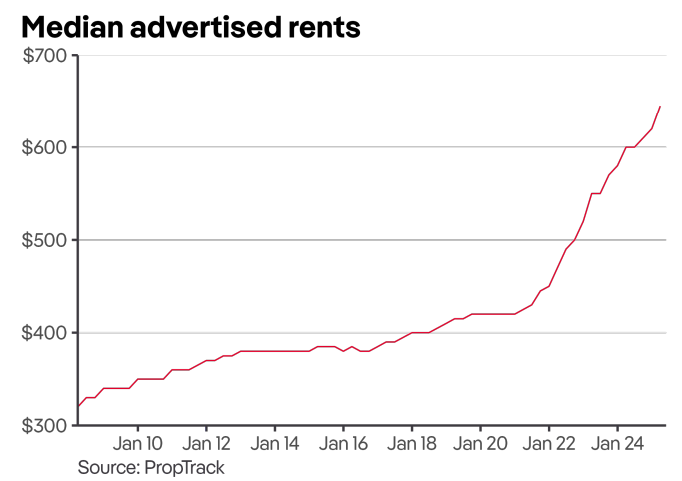
This 48% surge in rents compared to a 19% increase in median income over the same period.
Anglicare Australia released its annual Rental Affordability Snapshot, which is based on more than 51,000 rental listings across the nation.
As illustrated by the below graphic from SBS News, there are virtually no rental properties available to vulnerable Australians:
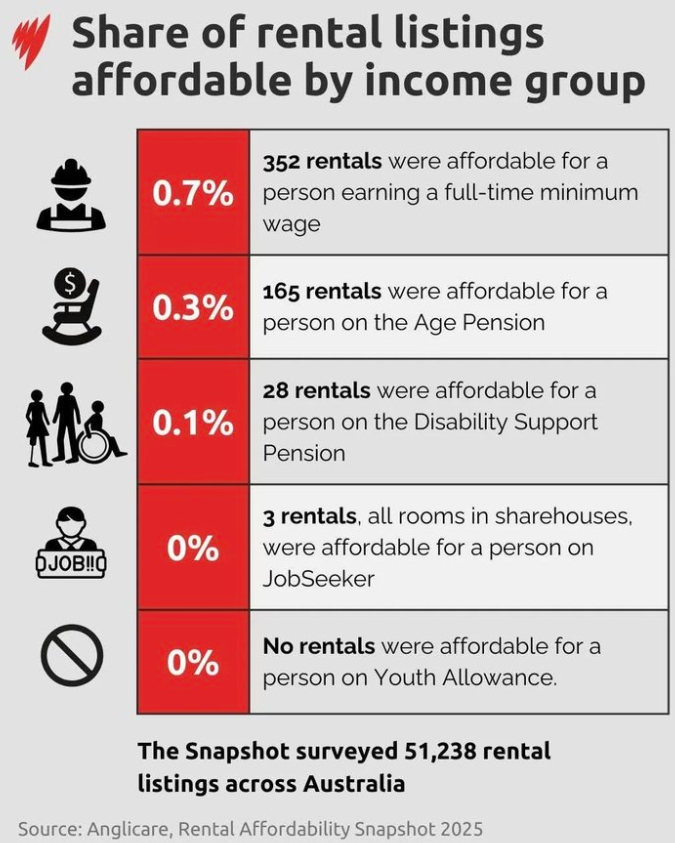
“Australia’s housing crisis is the worst it has ever been”, noted Anglicare Australia executive director Kasy Chambers.
“We keep hearing that this election is about living costs, but housing is the biggest cost facing Australians. The housing crisis is climbing the income ladder, and people on the lowest incomes don’t stand a chance”.
“Across the country, there are 74 electorates without a single affordable rental for someone on the minimum wage”.
“For a person out of work it’s even grimmer. Out of 51,000 listings across the country, just three were affordable for someone on JobSeeker.”
“There were no rental listings that were affordable for people on Youth Allowance”, Chambers said.
Australia’s rate of housing construction is in the doldrums, tracking near decade lows.
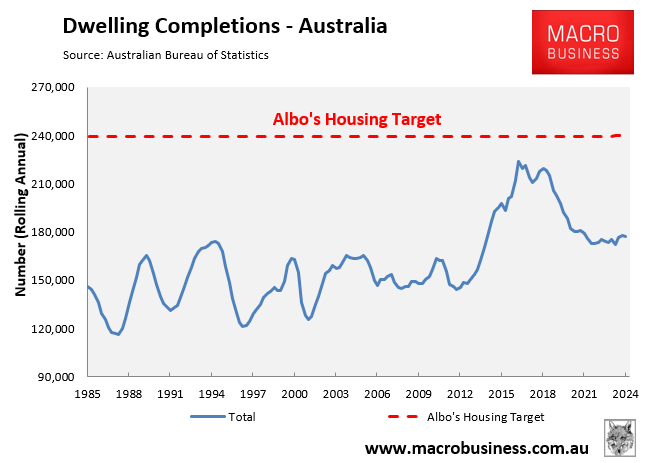
At the same time, the federal government continues to import historically high numbers of migrants who need housing.
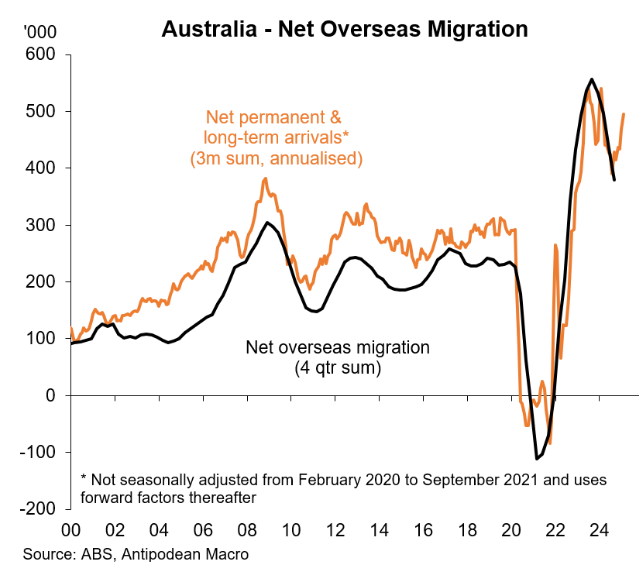
The immigration intake must be lowered to a level below the nation’s capacity to build housing and infrastructure. Otherwise the rental crisis will persist.
Policymakers should aim for a rental vacancy rate above 3% across all markets, which is around double current levels.
